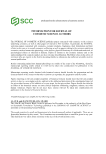Khan
et
al.
–
2021
Single
blind clinical study
Malus
domestica
12
12
weeks
Human
Transepidermal
water
loss
Topical
application
over
bilateral
cheeks
daily
n/a
water-in-oil
emulsion:
Oily
Phase: 16%–24% Parrafin
oil,
2–3%
Abil
EM90,
3%
Bees
wax
Water
phase:
3%
Anthocyanin
extract,
100%
purified
water
Placebo
(vehicle)
Decrease
in transepidermal
water
loss. Increase
in
skin
moisture
content.
Increase
in
skin
sebum
content.
Decrease
in
skin
erythema. Decrease
in
skin
melanin
content.
Anthocyanins
inhibit
tyrosinase activity, suppressing melanogenesis.
Beeswax
may
explain
the reduced transepidermal
water
loss
by
creating
a hydrophobic
barrier
over
the
skin.
Increase
in
sebum
content
may
be
explained
by
the
paraffin
oil
used
within
the formulation,
which
is
a
thick
viscous
oily liquid.
None
Luu
et
al.
–
2019
Controlled clinical trial
not
specified,
apple
cider vinegar
22
2
weeks
Human
Atopic
dermatitis
Soaking
of
one forearm
daily
for
ten
minutes
in
a
0.5%
bath
n/a
n/a
tap
water
Increased
trans-epidermal
water
loss
at
0
and
15
minutes
after
soaking,
which
returned
back
to
baseline
after
30
minutes.
Overall,
no improvement
in
skin
barrier integrity
was
found
Apple
cider
vinegar
is
proven
to
acidify
skin
which
could
hold
therapeutic
potential
for patients
with
atopic
dermatitis,
who
have disrupted
skin
pH.
Seventy
three
percent
of
subjects
with
atopic
dermatitis
reported
mild
skin
discomfort
of
the
arm
soaked
in
apple
cider vinegar.
One
atopic
dermatitis
subject experienced
severe
pruritus,
moderate burning,
and
erosion
on
the ACV-treated
forearm
which
resolved
within
2
days
of discontinuing
ACV
soaks
the
subject
did
not
resume
the
study.
One
subject
in
the
control
group experienced
a nonpruritic papular
rash,
which
resolved
without treatment.
(
)
et
al.
–
2021
Single
blind clinical study
Malus
domestica
12
12
weeks
Human
Transepidermal
water
loss
Topical
application
over
bilateral
cheeks
daily
n/a
water-in-oil
emulsion:
Oily
Phase: 16%–24% Parrafin
oil,
2–3%
Abil
EM90,
3%
Bees
wax
Water
phase:
3%
Anthocyanin
extract,
100%
purified
water
Placebo
(vehicle)
Decrease
in transepidermal
water
loss. Increase
in
skin
moisture
content.
Increase
in
skin
sebum
content.
Decrease
in
skin
erythema. Decrease
in
skin
melanin
content.
Anthocyanins
inhibit
tyrosinase activity, suppressing melanogenesis.
Beeswax
may
explain
the reduced transepidermal
water
loss
by
creating
a hydrophobic
barrier
over
the
skin.
Increase
in
sebum
content
may
be
explained
by
the
paraffin
oil
used
within
the formulation,
which
is
a
thick
viscous
oily liquid.
None
Luu
et
al.
–
2019
Controlled clinical trial
not
specified,
apple
cider vinegar
22
2
weeks
Human
Atopic
dermatitis
Soaking
of
one forearm
daily
for
ten
minutes
in
a
0.5%
bath
n/a
n/a
tap
water
Increased
trans-epidermal
water
loss
at
0
and
15
minutes
after
soaking,
which
returned
back
to
baseline
after
30
minutes.
Overall,
no improvement
in
skin
barrier integrity
was
found
Apple
cider
vinegar
is
proven
to
acidify
skin
which
could
hold
therapeutic
potential
for patients
with
atopic
dermatitis,
who
have disrupted
skin
pH.
Seventy
three
percent
of
subjects
with
atopic
dermatitis
reported
mild
skin
discomfort
of
the
arm
soaked
in
apple
cider vinegar.
One
atopic
dermatitis
subject experienced
severe
pruritus,
moderate burning,
and
erosion
on
the ACV-treated
forearm
which
resolved
within
2
days
of discontinuing
ACV
soaks
the
subject
did
not
resume
the
study.
One
subject
in
the
control
group experienced
a nonpruritic papular
rash,
which
resolved
without treatment.
(
)








































































